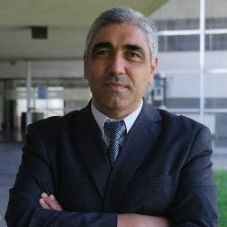Structural Health Monitoring, Damage Detection and Long-Term Performance
A special issue of Buildings (ISSN 2075-5309). This special issue belongs to the section "Building Structures".
Deadline for manuscript submissions: 30 November 2024 | Viewed by 962
Special Issue Editors
Interests: building materials; durability; cultural heritage; degradation; building pathology; SHM; smart materials
Interests: earthquake engineering; structural analysis and design; structural health monitoring; finite element modeling and analysis; building codes; nonlinear analysis; construction engineering; structural optimization; building materials; construction materials; protection of cultural heritage; structural engineering; seismic design; cultural studies; conservation and restoration of cultural heritage; structural reliability; civil engineering materials adobe; nondestructive testing; sustainable construction; civil engineering technology; construction technology; life-cycle assessment; reinforced concrete buildings; masonry buildings
Special Issues, Collections and Topics in MDPI journals
Interests: optical fiber sensors; e-Health platforms; structural health monitoring; biosensing
Special Issues, Collections and Topics in MDPI journals
Interests: SHM; assessment, strengthening and repair of structures; structural health monitoring; structural testing and modeling; smart materials; self-sensing materials
Special Issues, Collections and Topics in MDPI journals
Special Issue Information
Dear Colleagues,
With the increase in natural hazards, the degradation of existing infrastructure, and advances in computational methods, structural health monitoring (SHM) has become a promising technique for assessing civil structural conditions.
In fact, since the 1980s the number of applications of continuous monitoring systems in civil engineering structures has grown considerably. The development of new sensors and network devices has allowed for new applications, real-time monitoring and optimizing the sensorial systems. Also, artificial intelligence has provided a new field to explore, and cases of the automatization of data processing in the context of SHM and damage detection have emerged. Reports on applications of SHM in large structures, such as, for example, bridges, tunnels and offshore platforms, can be found in the literature, and heritage construction monitoring has been utilized more often. Fortunately, the costs related to SHM systems and new approaches have allowed for the application of SHM techniques in long-term performance and real-state safety management, highlighting the relevance of monitoring techniques for supporting decisions on time maintenance, the structural safety state, and the most economical approach for intervention.
This Special Issue, “Structural Health Monitoring, Damage Detection and Long-Term Performance”, will provide an overview of the existing knowledge on new approaches for building monitoring. Original research, theoretical and experimental work, case studies, and comprehensive review papers are invited to be submitted for possible publication. Relevant topics to this Special Issue include, but are not limited to, the following subjects:
- New approaches for SHM;
- Short and long-term monitoring;
- New sensors and sensorial networks;
- Digital methodologies for monitoring applications;
- Monitoring strategies for construction sustainability;
- Cultural heritage.
Dr. Esequiel Mesquita
Prof. Dr. Humberto Varum
Dr. Paulo Antunes
Dr. Antonella D'Alessandro
Guest Editors
Manuscript Submission Information
Manuscripts should be submitted online at www.mdpi.com by registering and logging in to this website. Once you are registered, click here to go to the submission form. Manuscripts can be submitted until the deadline. All submissions that pass pre-check are peer-reviewed. Accepted papers will be published continuously in the journal (as soon as accepted) and will be listed together on the special issue website. Research articles, review articles as well as short communications are invited. For planned papers, a title and short abstract (about 100 words) can be sent to the Editorial Office for announcement on this website.
Submitted manuscripts should not have been published previously, nor be under consideration for publication elsewhere (except conference proceedings papers). All manuscripts are thoroughly refereed through a single-blind peer-review process. A guide for authors and other relevant information for submission of manuscripts is available on the Instructions for Authors page. Buildings is an international peer-reviewed open access monthly journal published by MDPI.
Please visit the Instructions for Authors page before submitting a manuscript. The Article Processing Charge (APC) for publication in this open access journal is 2600 CHF (Swiss Francs). Submitted papers should be well formatted and use good English. Authors may use MDPI's English editing service prior to publication or during author revisions.
Keywords
- new approaches for SHM
- short and long-term monitoring
- new sensors and sensorial networks
- digital methodologies for monitoring applications
- monitoring strategies for construction sustainability
- cultural heritage








